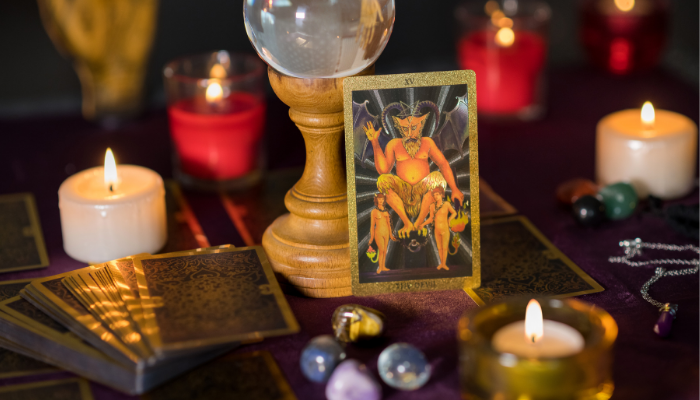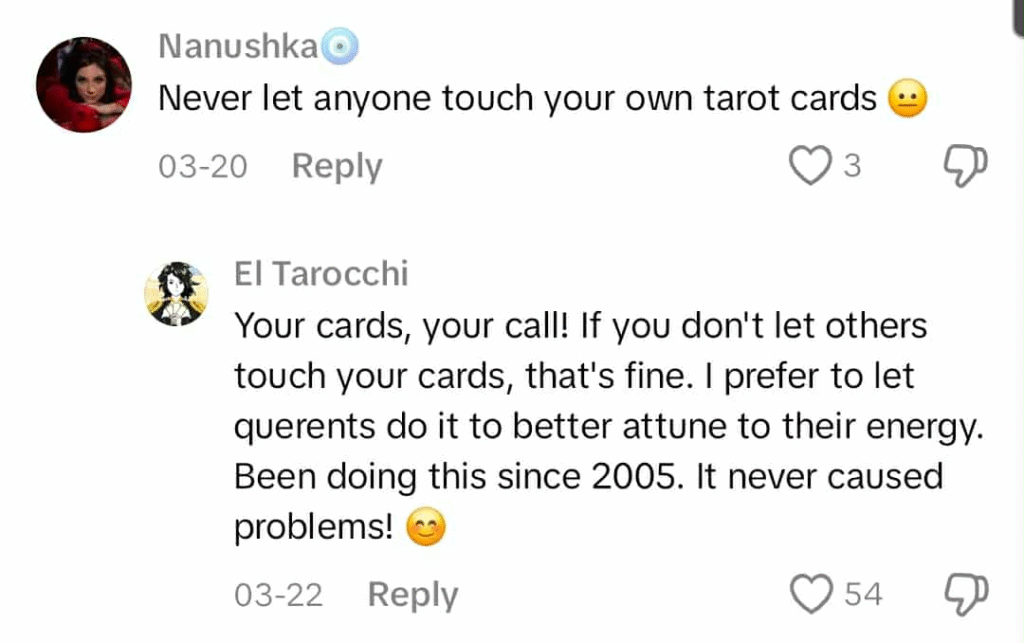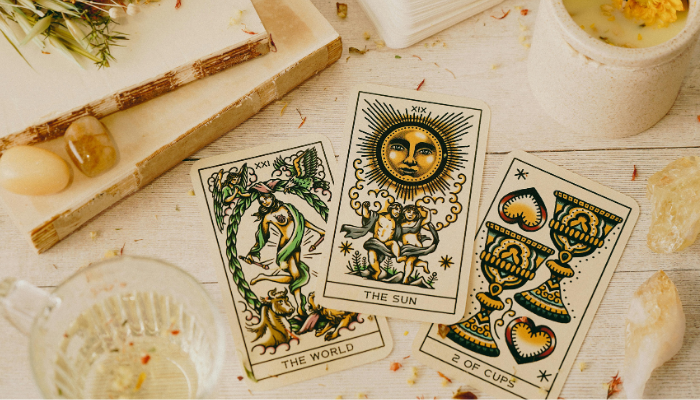If you grew up and live in the Philippines like I do, chances are you’ve heard some negative or spooky stories about tarot. Maybe you were told it’s a sin or that it attracts bad spirits or that it’s the “work of the devil”. Let’s clear the air: tarot is not what any of those things!
Here are some of the most common myths about tarot in the Philippines.
Myth 1: Tarot is Evil or Connected to Dark Forces/Negative Energy

“Tarot is evil” and “Tarot is the work of the devil” These are common negative things you will hear about tarot, and honestly? I think those statements are simply rooted in fear. The notion that tarot is inherently EVIL is the most common myths in the Philippines, mostly shaped by Christian teachings and scary movies.
Tarot is a tool to help you figure things out using your own knowledge and intuition. As your reader, I interpret the cards in your context and give you an outsider’s perspective to help you figure out what to do. I’m certainly not the Devil, nor do I call upon him to do readings. So unless you happen to be the Devil, then he has absolutely nothing to do with it.
From the El Tarocchi FAQs & Terms page
So is tarot reading a sin? In truth, tarot is a neutral tool. It doesn’t summon spirits or demons. It doesn’t work with any kind of supernatural force unless you want to bring that context into it. It’s not evil unless you use it for malicious purposes. At its core, tarot is a tool you can use to reflect, question, and connect with your own thoughts.
Some Filipinos are hesitant to even touch a deck, worried that it invites negative energy. But tarot doesn’t have any power on its own. It reflects your thoughts and helps you process them. If anything, it clears up the mental clutter that causes stress in the first place.
Myth 2: Tarot is Only for Fortune-Telling and Final-FINAL Predictions.

It’s a common belief that tarot tells the future with eerie accuracy. And yes, some readers do focus on future outcomes in their practice. But that’s not the only way to work with tarot, and it’s not how I use it. For me, tarot goes beyond “panghuhula“ by helping to explore possibilities, reflect on current energies, and support decision-making in the present moment.
There’s also the idea that once you get a reading, your future is sealed. But in reality, a tarot reading is just a snapshot of what might happen if things continue on their current path. Nothing is set in stone. You always have the power to choose and change your direction.
Myth 3: Only Psychics Can Read Tarot

Nope! You don’t need an “open third eye” to use tarot. Anyone can learn how to read the cards! Reading tarot just is like learning a new, symbolic language. Psychic powers help but they’re not required. You just need to be curious and willing to learn as you go!
Myth 4: You Can’t Buy Your Own Deck

Some people still think a tarot deck must be a gift or inherited, or else it won’t work. hat belief comes from older traditions that some people still hold onto today. Based on my experience, you can absolutely buy your own deck! In fact, choosing your own can make the connection feel more personal.
Myth 5: No One Else Should Touch Your Cards
There’s a popular belief that no one aside from you should ever touch your tarot cards or it will “ruin the energy.” I recently ran into a discussion about this on TikTok (although it wasn’t on a Filipino TikToker’s page), where someone was telling content creator @cayydences that no one should touch their cards.

When I saw it, I really couldn’t help but reply. While it’s totally okay to set boundaries with your deck, letting others touch your cards isn’t automatically a bad thing. Some readers prefer to keep their decks personal, while others are fine with clients or friends shuffling. It’s really about your own comfort and ritual. Remember that it’s your tarot practice, so you should go with what feels right for you.
Tarot is a Tool for Clarity, Not Fear

Tarot doesn’t require belief in magic, spirits, or fate. It’s about having the courage to look inward, ask better questions, and trust your own inner compass. If you’ve been curious about tarot but hesitant to learn or to get a tarot reading, I hope this gives you a clearer, more grounded view of what tarot truly is.
At the end of the day, tarot is a practice. One that can be deeply personal, intuitive, and healing without needing to be dramatic, mystical, or woo-woo. However you choose to engage with it, it should feel supportive and empowering for you!
Pingback: How to Choose Your Very First Tarot Deck - El Tarocchi - Tarot Reading & Gaming